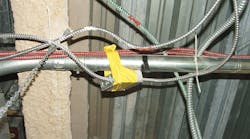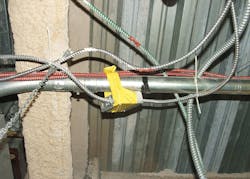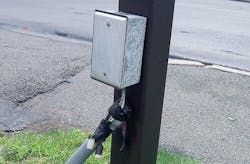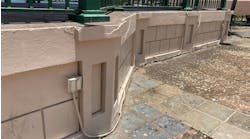How well do you know the Code? Think you can spot violations the original installer either ignored or couldn't identify? Here's your chance to moonlight as an electrical inspector and second-guess someone else's work from the safety of your living room or office. It's your turn to identify the violation.
Hint: Nominated for best supporting actor
April Winners
Our only winner this month was David Gomez, an estimator for Nickle Electrical Companies in Newark, Del. He correctly identified several problems with this installation, including the following NEC violations:
Section 110.12(B) prohibits broken parts, “which may adversely affect the safe operation or mechanical strength of the equipment.” This broken PVC left the wiring and wire connectors exposed to the elements and any curious creatures that may wander up to it, including children that may be walking by. Since exposed wiring is located adjacent to a sidewalk, it could create a real shock threat — especially in wet weather. The position of the wire connectors could easily allow moisture to enter and accumulate inside of them, which could cause serious corrosion to those connections — further increasing the hazard.
It appears that sunlight has deteriorated the wire insulation and the wire connectors.
Section 310.10(D) requires conductors exposed to direct sunlight to be listed as sunlight resistant or covered with a sleeve or tape that is sunlight resistant.
Where PVC is exposed in areas subject to damage, Sec. 352.10(F) and the Informational Note inform us the best choice here would be to use Schedule 80 PVC.






